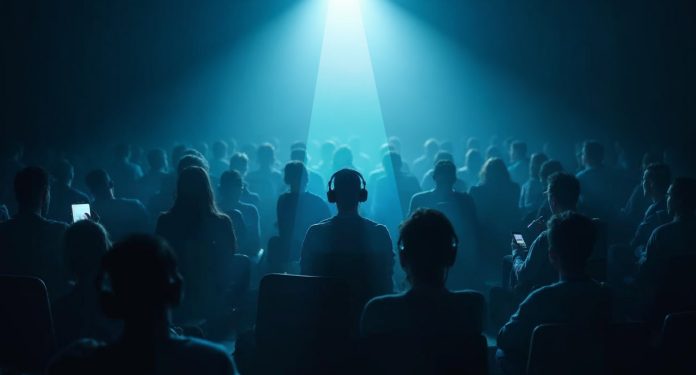McKinsey’s “Attention Equation” urges media leaders to shift focus from quantity to quality of attention—unlocking deeper engagement and smarter monetization.
Businesses operating in today’s saturated media landscape face a daunting challenge—how to capture and maintain consumer attention amidst a tsunami of content. For decades, the media industry has measured success by the sheer volume of consumer attention, aptly reflected in metrics like hours watched or clicks amassed. However, insights from McKinsey’s recent report, “The Attention Equation: Winning the Right Battles for Consumer Attention,” highlight a critical paradigm shift toward measuring the quality of attention rather than just its quantity. This new outlook is poised to revolutionize media monetization and redefine strategies for advertisers and content creators alike.
From Quantity to Quality
Traditionally, the media industry viewed consumer attention in terms of scale—chasing larger audiences and greater consumption hours. The assumption was that increased exposure would inevitably lead to monetization success. However, this approach neglects the core truth that not all attention is equally valuable. One consumer glued to a piece of content with intent and focus generates more meaningful engagement—and, by extension, more revenue value—than multiple distracted viewers casually skimming through it.
The McKinsey report introduces the “attention equation” to address this blind spot, encapsulating both the quantity and quality of attention. The research is grounded in a comprehensive survey of 7,000 global participants, including 3,000 consumers in the United States. It argues that the ultimate determinant of attention’s value lies in two primary factors—the commercial quotient (CQ) and the attention quotient (AQ).
The Formula for Attention Value
The “attention equation” brings clarity to what drives meaningful engagement. It integrates two complementary components:
Commercial Quotient (CQ)
This measures traditional variables, including market dynamics, consumer demographics, advertising effectiveness, and platform sophistication. According to the report, CQ explains about two-thirds of the variability in how attention translates into monetization. For example, legacy media formats like magazines and live events remain highly profitable due to factors such as scarcity and cultural relevance.
Attention Quotient (AQ)
Adding a new layer to understanding, AQ quantifies the quality of engagement by considering two critical dimensions:
- Level of Focus: How actively involved the consumer is with the content. For example, activities like reading a book or attending a live concert demand high focus compared to multitasking behavior (e.g., scrolling social media while watching TV).
- Job to Be Done: Why the consumer is engaging with the content. Motivations range from light entertainment and relaxation to seeking education, social connection, or background ambiance.
The interplay between the CQ and AQ provides a fuller picture of attention’s value. For instance, while a live concert offers limited scalability, it elicits deep focus and enjoyment, making it one of the most profitable mediums, with an average monetization value of $17 to $33 per hour.
Consumer Attention Patterns and Media Monetization
The McKinsey findings reveal striking disparities in how various media formats monetize attention. Live experiences, video gaming, and sports emerge as the highest-value drivers, generating significant revenue per hour of consumption. Meanwhile, digital formats such as podcasts and streaming services often lag in monetization efficiency despite capturing vast consumer attention. For example, digital music monetizes at just $0.12 per hour, while legacy mediums like books and magazines monetize significantly better despite dwindling market share.
This divergence underscores the importance of understanding why consumers pay attention. Younger audiences, for example, demonstrate focused attention on interactive mediums like video games while older generations engage more deeply with traditional formats like newspapers. Interestingly, focus correlates directly with spend—consumers in the top quartile of focus spend twice as much on media content as those in the bottom quartile. High-focus engagement thus holds immense untapped potential for media companies.
Segmenting Attention into High-Value Groups
To leverage this nuanced understanding of attention, McKinsey proposes segmenting consumers based on their attention value and spending potential. Three standout groups offer particular promise for media stakeholders:
Content Lovers (13% of consumers)
These passionate superfans are eager to consume cross-platform franchises, from movies to merchandise. They spend 2.4 times more on media than the average consumer, representing a lucrative, high-conversion audience.
Interactivity Enthusiasts (16%)
Competitive and community-oriented, this group is drawn to interactive spaces like gaming and sports betting. However, they often experience decision fatigue and cost barriers, highlighting opportunities for tailored offerings.
Community Trendsetters (10%)
Sociable and connected, these consumers heavily influence online culture and spend disproportionately on collective experiences like live concerts or themed attractions. They are also highly receptive to aligned advertising efforts.
Importantly, the research finds that segments with the highest attention value also dominate media spend, offering a compelling case for targeting these groups with precision.
Strategic Recommendations for Advertisers and Creators
The “attention equation” offers actionable insights for two key stakeholder groups—advertisers and media creators and distributors:
For Advertisers:
- Match Content with Attention Value: Ads should align with consumer engagement levels and the job to be done. For example, a humorous ad might find resonance in light-entertainment contexts, while emotionally driven narratives could better suit deep-focus viewer segments.
- Identify Underpriced Attention: Platforms like mobile gaming and video streaming offer undervalued opportunities despite their strong focus and monetization potential. Advertisers should rethink budget allocation toward these attention sweet spots.
For Creators and Distributors:
- Prioritize Quality Attention: Content strategies should focus on formats that elicit high-focus engagement. For instance, producers could emphasize original intellectual property and communal experiences that command undivided viewer attention.
- Diversify Content Portfolios: Balancing content that serves different “jobs to be done” enables creators to tap into multiple lucrative consumer segments. Offering both educational and entertainment-driven programming broadens audience appeal.
- Leverage Data and Technology: Platforms with superior recommendation algorithms see higher focus scores. Investment in these tools can optimize engagement and, subsequently, subscriber value.
The Road Ahead
McKinsey’s “attention equation” shifts the conversation in the media business toward a more insightful, value-driven understanding of consumer behavior. By emphasizing the quality of attention—evaluated through focus and intent—companies can create better strategies to engage high-value audiences, maximize monetization potential, and thrive in the attention economy.
Organizations adopting this research-backed approach will be well-positioned to capture the fragmented, immensely valuable, consumer attention landscape. For media stakeholders, the opportunity lies not merely in winning more attention but in securing the right kind of attention—focused, intentional, and high-impact.










